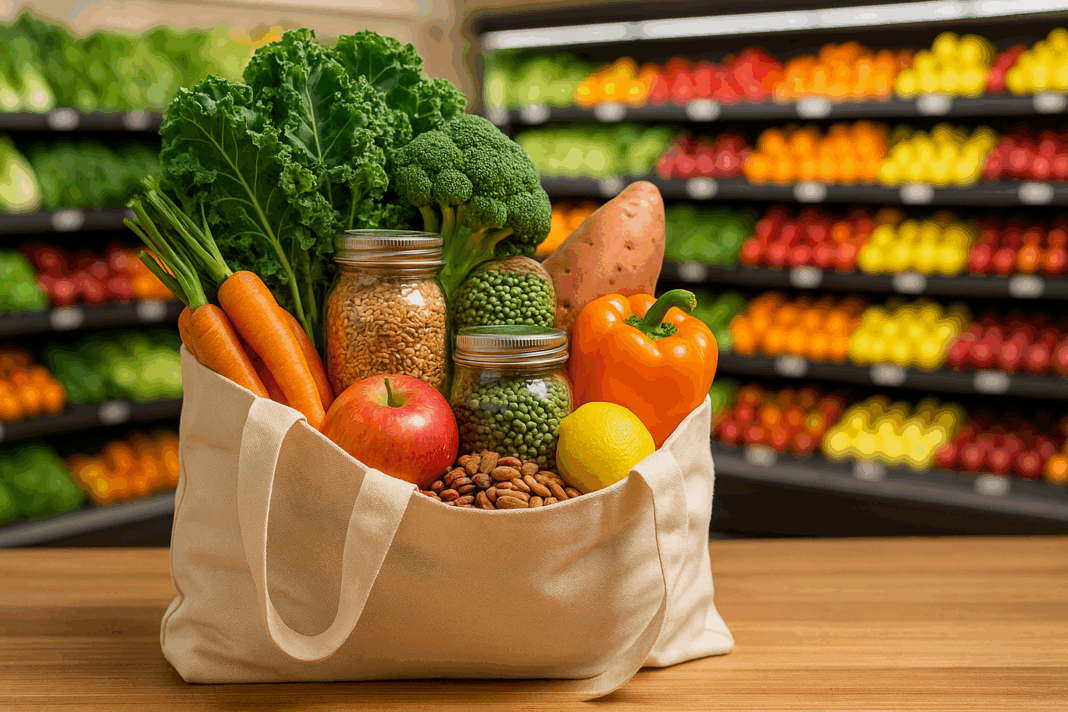The Power of Food Choices: Why Your Grocery List Matters More Than You Think
In a world of ultra-processed convenience and conflicting diet advice, the simplicity of a whole food plant-based lifestyle is refreshingly powerful. But embracing this way of eating requires more than intention—it demands thoughtful preparation, starting with what goes into your cart. At the heart of this transition lies the humble grocery list, a tool that transforms your shopping trip into a health-boosting strategy. Understanding how to build a whole food plant based diet grocery list with intention helps eliminate guesswork, reduce waste, and align your daily meals with your health goals.
The appeal of a whole food based diet lies in its nutrient density, its alignment with long-term health, and its capacity to reduce the risk of chronic diseases. Yet, knowing what foods to prioritize can feel daunting to newcomers. With aisles crowded by marketing claims and misleading health halos, it’s easy to feel overwhelmed. That’s why curating a smart plant based grocery list—one that reflects not just personal taste, but evidence-based guidance—is so essential. When your list is grounded in whole foods, plant diversity, and practical staples, it becomes a blueprint for wellness.
You may also like: How a Whole Foods Diet Supports Sustainable Weight Loss: Expert Tips for Eating Whole Foods to Lose Weight Safely
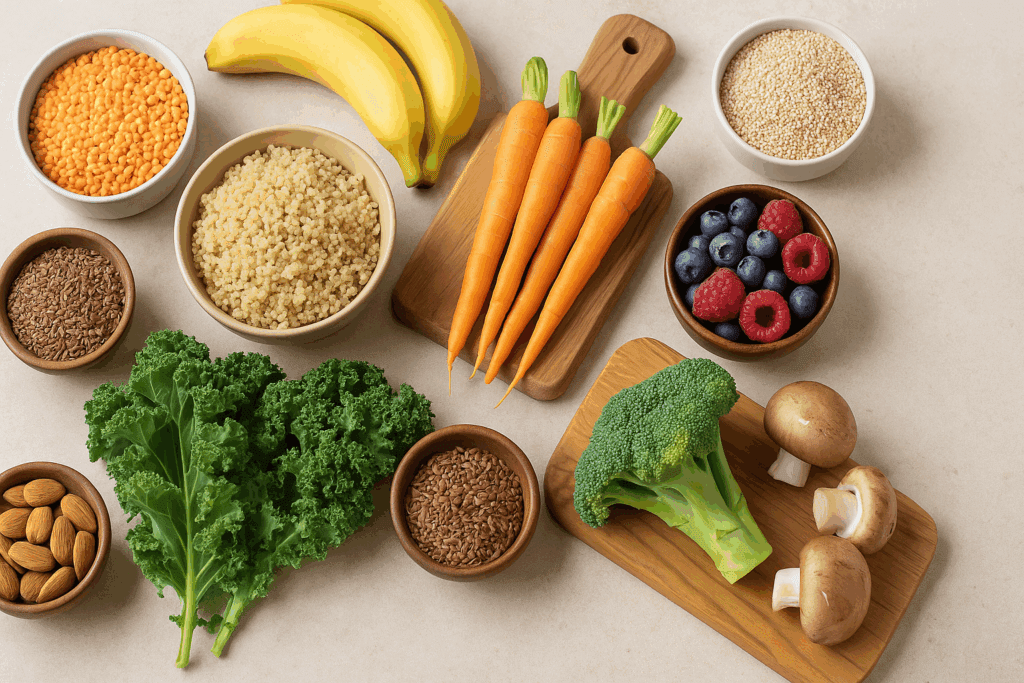
Understanding the Whole Food Plant-Based Diet: More Than Just Plants
Before diving into the specifics of a grocery shopping list for plant based diet success, it’s important to understand what the term actually means. A whole food plant-based diet is centered around minimally processed foods that come from plants—think vegetables, fruits, whole grains, legumes, nuts, and seeds. Unlike vegan diets, which may still include highly processed plant-based alternatives, a whole food plant based list excludes items like refined oils, added sugars, and faux meats that lack nutritional density.
This approach promotes foods in their most natural state or as close to it as possible. The emphasis is not just on avoiding animal products, but on maximizing the intake of nutrient-rich foods that fuel the body efficiently. From a nutritional perspective, this type of diet provides a wide spectrum of fiber, antioxidants, phytochemicals, and anti-inflammatory compounds. As research increasingly links these foods to reduced risk of heart disease, diabetes, and certain cancers, many health practitioners now encourage their patients to adopt a whole food based diet as part of a comprehensive wellness plan.
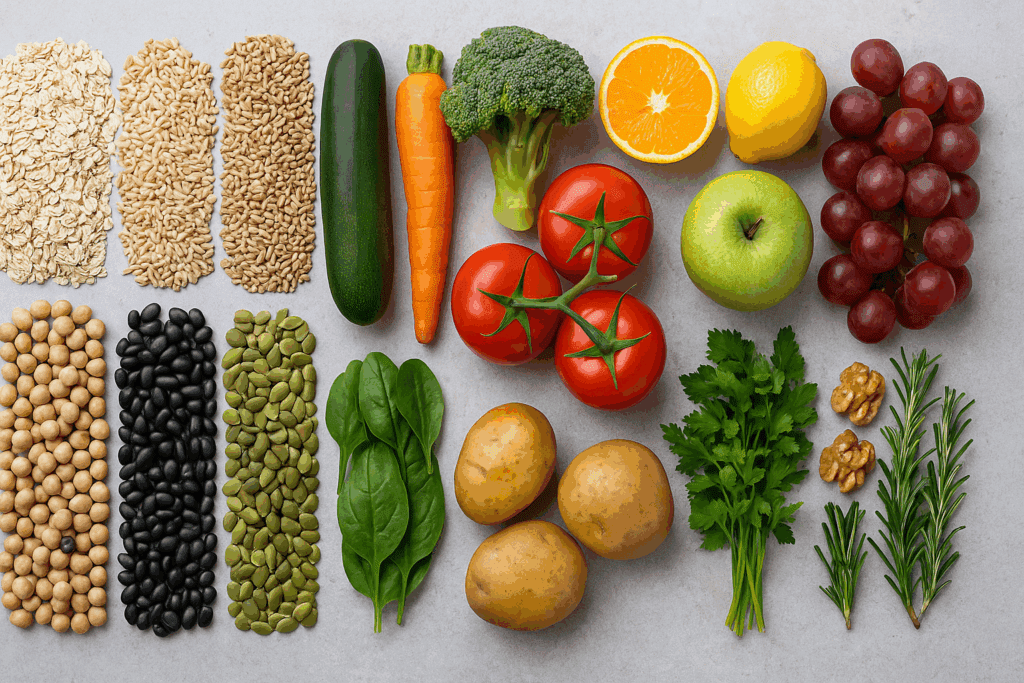
What to Include in a Whole Food Plant Based Grocery List: Staples for Success
When assembling a whole food plant based diet grocery list, variety and balance are key. A well-rounded cart includes foods from every plant-based category to ensure nutritional diversity. Whole grains like quinoa, brown rice, millet, and oats provide sustained energy and essential B vitamins. Legumes such as lentils, black beans, chickpeas, and split peas are rich in protein and iron, making them the cornerstone of many plant-based meals.
Vegetables—especially leafy greens, cruciferous options like broccoli and cauliflower, and colorful choices like carrots and bell peppers—deliver fiber and phytonutrients that support everything from gut health to immune function. Fruits offer natural sweetness, along with vitamins, minerals, and disease-fighting compounds. Berries, citrus, bananas, apples, and seasonal produce are all excellent additions to a whole food plant based grocery list. And don’t overlook nuts and seeds: flaxseeds, chia, walnuts, and sunflower seeds are small but mighty sources of healthy fats, protein, and trace minerals.
A thoughtful plant based diet shopping list also includes herbs and spices, which enhance flavor without added sodium or fat. Ingredients like garlic, turmeric, ginger, basil, and cumin not only boost taste but provide powerful anti-inflammatory and antioxidant effects.

Navigating the Grocery Store: Strategic Shopping in a Processed World
The modern supermarket is engineered to tempt, distract, and upsell. Understanding how to move through the store with intention can make all the difference. A strong plant based grocery list helps anchor your decisions and prevents impulse buys that veer away from your goals. The produce section should be your home base. Spend time selecting fresh fruits and vegetables, prioritizing both staples and seasonal finds to encourage variety throughout the week.
When it comes to grains and legumes, explore the bulk section if available—it often offers the best value and the least packaging. This is especially helpful for those following a low fat whole food plant based diet, since bulk options let you control quantities without the added oils or sugars often found in pre-packaged alternatives. Reading ingredient labels becomes essential for products like breads, cereals, and plant-based milks. Look for items with minimal, recognizable ingredients and no added oils or sweeteners.
Frozen foods can also be an asset, especially when certain fruits and vegetables are out of season. Stocking up on frozen spinach, peas, berries, and edamame helps ensure you always have nutritious options on hand. Just be cautious to avoid frozen meals or processed plant-based snacks that may carry excessive sodium or hidden fats.
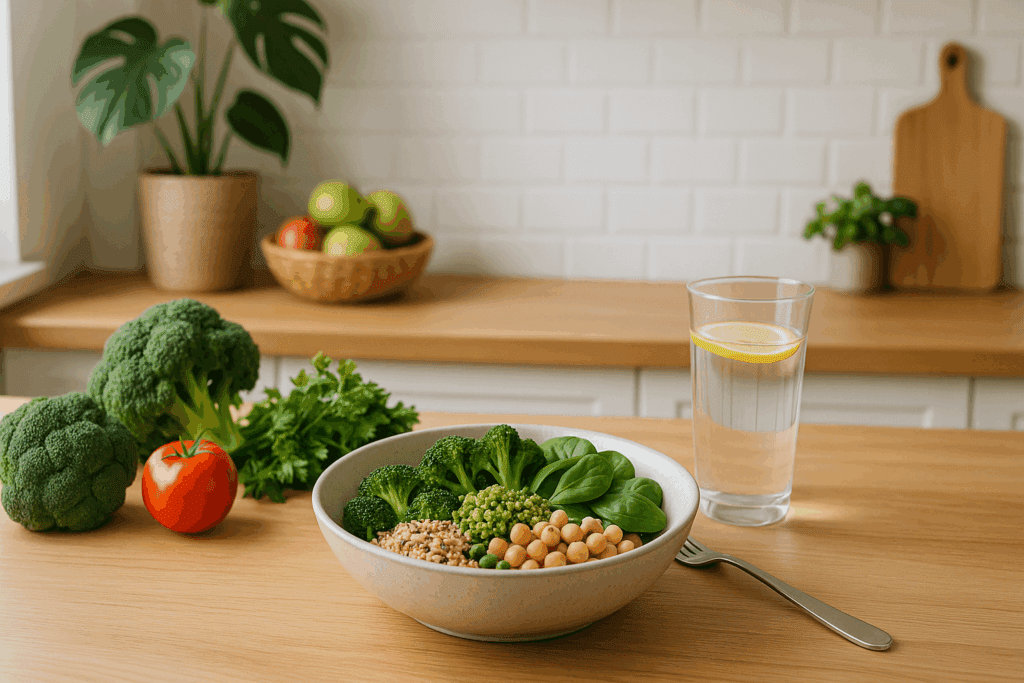
How a Low Fat Whole Food Plant Based Diet Can Support Long-Term Health
One of the distinguishing characteristics of a whole food plant-based diet—especially in its low fat form—is its potential to reverse or prevent chronic disease. Research from programs like Dr. Dean Ornish’s heart disease reversal protocol and studies conducted by Dr. Caldwell Esselstyn have demonstrated that low fat whole food plant based diets can dramatically improve cardiovascular health. By eliminating oils, reducing saturated fat, and emphasizing high-fiber foods, this dietary approach supports arterial health, lowers cholesterol, and stabilizes blood sugar levels.
From a metabolic perspective, diets rich in whole plant foods and low in added fat can enhance insulin sensitivity and reduce inflammation. These effects are particularly beneficial for individuals managing type 2 diabetes or metabolic syndrome. For others, a low fat whole food plant based diet offers a sustainable way to maintain a healthy weight without calorie counting or restrictive patterns. When meals are built from the foods on a well-curated whole food plant based food list, satiety naturally follows due to the fiber-rich, water-dense nature of these ingredients.
The Science Behind the List: Expert-Backed Principles for Plant-Based Nutrition
As more registered dietitians and clinical nutritionists support the adoption of plant-based eating, the importance of having a precise, nutrient-rich grocery list becomes clearer. Experts emphasize that relying on a comprehensive plant based diet grocery list helps cover all essential nutrients, from fiber and protein to vitamins like B12 and D (which may need supplementation depending on sun exposure and diet variety).
Protein is a common concern for those new to plant-based diets, but experts clarify that it’s easily achieved through a diverse list of plant based foods. A combination of legumes, whole grains, nuts, seeds, and vegetables provides more than enough amino acids for most people. Additionally, prioritizing whole sources of omega-3s—such as flaxseeds and walnuts—supports brain and heart health in the absence of fish. Iron, zinc, and calcium can also be found in abundance across the plant kingdom when variety is emphasized in your whole food plant based diet shopping list.
One of the most critical expert recommendations is consistency. Those who consistently shop with a plant based grocery list and maintain a kitchen stocked with whole food staples are far more likely to stay on track with their dietary goals. This practical habit fosters long-term adherence and reduces the friction associated with meal planning or decision fatigue.
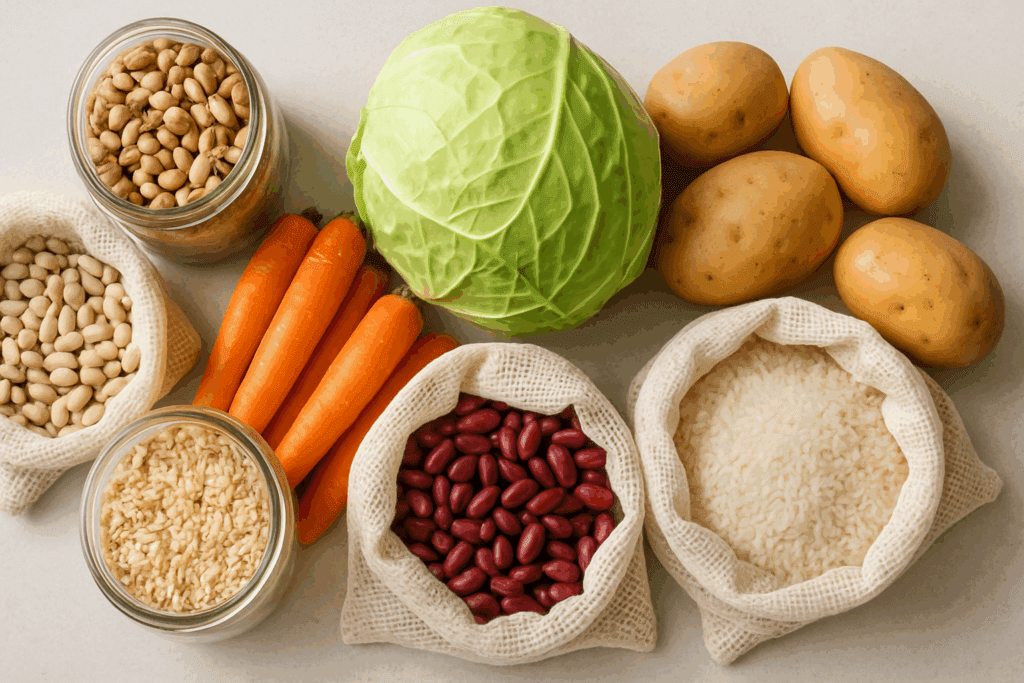
Budgeting and Accessibility: Building a Whole Food Plant Based Diet on a Budget
Contrary to the perception that plant-based eating is expensive, a well-planned whole food plant based grocery list can actually be more affordable than a diet heavy in animal products and processed foods. Staples like beans, lentils, rice, oats, and seasonal vegetables offer exceptional nutritional value for relatively low cost. By focusing on whole ingredients rather than pre-packaged plant-based items, you reduce the markup associated with convenience.
Farmers markets, community-supported agriculture (CSA) programs, and co-ops can provide local, fresh produce at competitive prices, especially when you shop in-season. For those seeking budget-friendly options, frozen fruits and vegetables offer a practical alternative that retains most of the nutritional benefits of fresh produce. Creating a grocery shopping list for plant based diet goals ahead of time ensures you can take advantage of sales, avoid food waste, and prevent unnecessary trips to the store.
Batch cooking and meal prep further enhance budget efficiency. Using ingredients from your whole food plant based grocery list to prepare meals in bulk allows you to save both money and time. Think of it as an investment in your long-term health that pays daily dividends in energy, clarity, and resilience.
Adapting to Real Life: Social Situations, Family Meals, and Busy Lifestyles
Even the most thoughtfully crafted plant based diet shopping list must function in the context of real life. Whether you’re feeding a family with diverse preferences, navigating holidays, or managing a demanding schedule, adaptability is key. The foundation you build with your list of whole foods plant based diet staples makes it easier to improvise when plans change or when you’re dining outside the home.
Keeping quick-prep ingredients like pre-cooked grains, canned beans (without added sodium), and chopped frozen vegetables on hand can turn a chaotic evening into a nutritious dinner in minutes. Planning ahead with your whole food plant based shopping list also allows you to prepare dishes for social gatherings that introduce others to the richness and satisfaction of plant-based meals—without sacrificing flavor or tradition.
Children and partners may need time to adjust, but involving them in grocery shopping and meal prep can foster a sense of ownership and curiosity. When they help choose items from the whole food plant based list and assist in the kitchen, they become more invested in the outcome and more likely to try new dishes with enthusiasm.
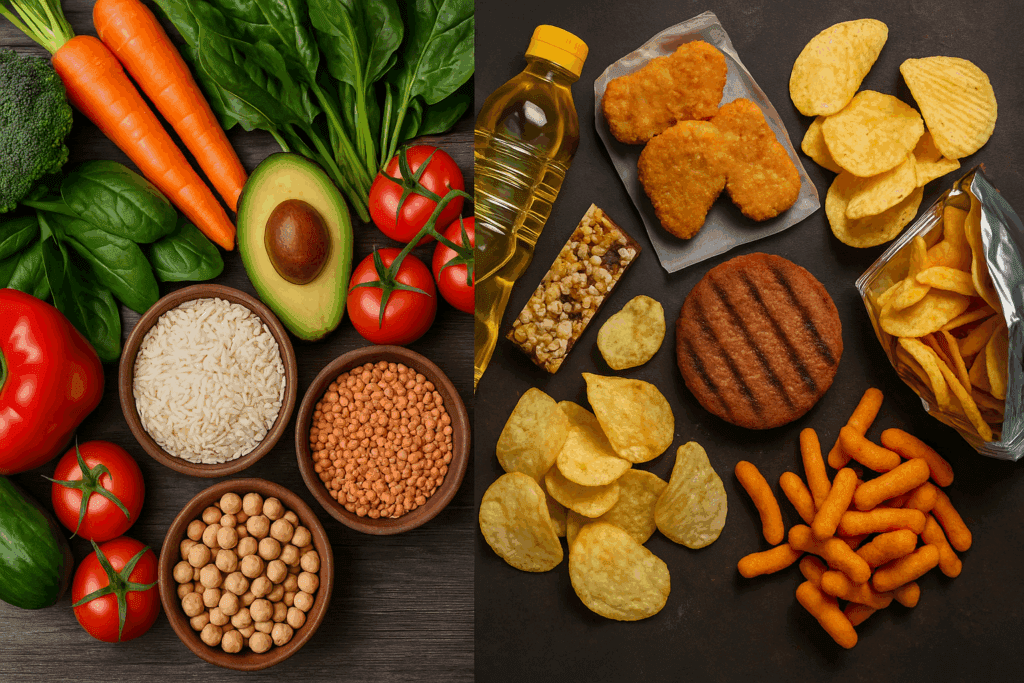
Avoiding Common Pitfalls: What Not to Include on Your Plant-Based Grocery List
Despite the best intentions, not all plant-based foods support optimal health. Highly processed items such as vegan cheeses, meat substitutes, sugary granola bars, and refined snacks often sneak into shopping carts under the guise of being “plant-based.” While they may be acceptable as occasional indulgences, they don’t belong on a consistent whole food plant based diet shopping list.
Refined oils, including coconut, palm, and canola oil, should also be used sparingly—or avoided altogether—on a low fat whole food plant based diet. These oils are calorie-dense and nutrient-poor, offering little benefit in exchange for a high energy cost. Instead, rely on whole food sources of fat such as avocados, nuts, and seeds for a more balanced nutritional profile.
Products marketed as “natural” or “organic” aren’t automatically aligned with whole food plant-based principles either. Ingredient lists should remain the gold standard for evaluating whether an item supports your goals. If a product contains a long list of additives or unfamiliar chemicals, it likely doesn’t belong on your whole food plant based diet grocery list.
Your Kitchen as a Wellness Center: Stocking with Intention and Confidence
Once your grocery list is complete, the next step is setting up your kitchen to support your success. Treat your pantry, fridge, and freezer as extensions of your health toolkit. A well-stocked kitchen reduces stress and temptation, making it easy to stick to your whole food based diet even when life gets busy. Organize dry goods by category, label storage jars clearly, and rotate perishables regularly to prevent spoilage.
Having key tools like a high-speed blender, pressure cooker, and a good set of knives can make meal prep faster and more enjoyable. When your kitchen is stocked with foods from your whole food plant based food list and you have the tools to prepare them efficiently, healthy eating becomes a seamless part of your daily rhythm.
Frequently Asked Questions: Smart Grocery Shopping for a Plant-Based Lifestyle
(Supplement to the article “Smart Grocery Shopping for a Plant-Based Lifestyle: Your Complete Whole Food Plant Based Diet Grocery List Backed by Experts”)
1. How can I make my plant based grocery list more sustainable and environmentally friendly?
To enhance sustainability, focus on locally grown, seasonal produce when crafting your plant based grocery list. This reduces the carbon footprint associated with long-distance food transport and supports local farmers. Including foods in your whole food plant based diet grocery list that require fewer natural resources—like lentils, oats, and leafy greens—also contributes to environmental conservation. When selecting packaged goods, opt for bulk bin items or minimally packaged products to reduce waste. Sustainability can also be supported by choosing plant-based proteins over imported or heavily processed alternatives, ensuring your whole food plant based food list reflects both nutritional and ecological responsibility.
2. What are some often-overlooked items that belong on a whole food plant based grocery list?
Many people stick to familiar staples, but expanding your whole food plant based list can introduce new flavors and enhance nutrient intake. Items like kabocha squash, amaranth, tempeh, purple sweet potatoes, and sea vegetables (like wakame or dulse) often get overlooked. These foods are rich in micronutrients and fiber, and they help diversify your gut microbiome when included in a regular plant based diet grocery list. Fermented foods like miso or raw sauerkraut, although used in small amounts, can support gut health and immunity. Including these in your whole food plant based diet shopping list adds both variety and functional benefits often missing from more generic approaches.
3. How should athletes adapt a whole food based diet for higher energy needs?
Athletes can absolutely thrive on a whole food based diet, but they should tailor their grocery shopping list for plant based diet performance accordingly. Calorie density becomes more important, so adding higher-calorie whole foods like avocados, tahini, quinoa, and dates can help meet energy demands. A complete plant based diet shopping list for athletes also emphasizes legumes, starchy vegetables, and whole grains for sustained fuel and recovery support. Smoothies with greens, berries, nut butters, and seeds are practical for quick refueling. Ensuring that the whole food plant based grocery list includes naturally higher-protein plant items—like hemp seeds, tofu, or black beans—is essential for muscle repair and strength maintenance.
4. Can a low fat whole food plant based diet support hormonal balance, especially for women?
Yes, a low fat whole food plant based diet can play a positive role in hormonal regulation, particularly for women dealing with conditions like PCOS or menopause. By reducing intake of saturated fats and increasing fiber through foods listed in a typical whole food plant based diet grocery list, women may experience improved insulin sensitivity and more stable estrogen levels. Cruciferous vegetables—like kale, cabbage, and broccoli—help support natural detoxification pathways that metabolize hormones efficiently. Including flaxseeds, which provide lignans and omega-3s, in your plant based grocery list further supports hormonal health. While fats are important, they should come from whole sources like seeds and nuts, not oils, to align with a low fat whole food plant based diet.
5. What are the best strategies for transitioning children to a whole food plant based diet without resistance?
Introducing kids to a whole food plant based diet works best when approached gradually and with creativity. Start by including familiar flavors using ingredients from your whole food plant based shopping list—like sweet potatoes, bananas, or whole grain pasta. Preparing fun, colorful meals and involving children in shopping and cooking can foster curiosity and acceptance. Smooth transitions may include plant-based versions of favorites (like lentil tacos or chickpea nuggets) using ingredients from your list of plant based foods that replicate familiar textures. Make the grocery shopping list for plant based diet meals a family effort by letting kids pick a new vegetable or fruit to try each week. Positive reinforcement and taste exploration often lead to lasting shifts.
6. How do I handle social situations or dining out while following a whole food plant based diet?
While social settings can present challenges, planning ahead helps immensely. Review menus in advance and suggest restaurants that offer meals aligning with your plant based diet shopping list values. Many global cuisines—such as Mediterranean, Ethiopian, or Thai—feature naturally plant-based dishes that can often be ordered with little modification. Bringing a dish to gatherings ensures that something on your whole food plant based list is available and allows others to enjoy it, too. Communicating dietary preferences with hosts in a respectful, educational way helps prevent misunderstandings. Over time, consistent choices supported by your whole food plant based food list will normalize your lifestyle for those around you.
7. What are the long-term cognitive benefits of maintaining a whole food based diet?
Emerging research suggests that a diet rich in foods from a whole food plant based list may reduce the risk of cognitive decline, dementia, and Alzheimer’s disease. Antioxidant-rich fruits and vegetables—particularly berries, leafy greens, and cruciferous vegetables—support brain function by combating oxidative stress. Omega-3s from plant sources like walnuts and flaxseeds also support memory and mood regulation. A well-balanced plant based diet grocery list can provide anti-inflammatory compounds that benefit the blood-brain barrier and support healthy neurotransmission. Long-term adherence to a whole food plant based grocery list has been associated with better mental clarity, focus, and reduced rates of age-related neurological disease.
8. Are there ways to simplify meal prep using a whole food plant based diet grocery list?
Absolutely. Simplifying meal prep starts with organizing your whole food plant based shopping list into categories like grains, legumes, produce, and condiments to streamline cooking. Batch-cooking staples such as lentils, brown rice, or roasted vegetables early in the week helps you assemble meals quickly. A whole food plant based diet shopping list should include versatile ingredients like canned beans, frozen vegetables, and quick-cooking grains such as quinoa or millet. Pre-cutting produce and storing it in glass containers allows for quick stir-fries, bowls, or soups. The key is to build mix-and-match components from your list of plant based foods that can be repurposed throughout the week, minimizing time and maximizing flavor.
9. How do I ensure I’m meeting micronutrient needs on a plant based diet without overcomplicating my grocery list?
A well-designed whole food plant based diet grocery list naturally covers most micronutrients if variety is prioritized. However, nutrients like B12, D, iodine, and zinc may require special attention. Fortified plant milks, nutritional yeast, and sea vegetables help bridge some of these gaps. It’s also helpful to rotate greens, legumes, and whole grains from your whole food plant based list to capture a spectrum of vitamins and minerals. While supplementation is sometimes necessary—especially for B12—maintaining a plant based grocery list that emphasizes color, diversity, and minimally processed foods lays a strong foundation. A periodic blood test can confirm if your nutrient intake is sufficient and guide further adjustments.
10. What’s the best way to evolve your whole food plant based diet over time to prevent boredom or burnout?
Long-term success hinges on creativity and exploration. Over time, your whole food plant based grocery list should evolve to include new international ingredients, herbs, and spices that keep meals exciting. Explore new grains like teff, sorghum, or wild rice, or experiment with global dishes inspired by your favorite cuisines using items from your whole food plant based diet shopping list. Joining community challenges or recipe clubs can reinvigorate your commitment. Reassess your list of whole foods plant based diet items every few months to identify any ruts and make seasonal updates. Embracing food as both nourishment and adventure ensures that your plant based journey remains both sustainable and enjoyable.
Conclusion: The Whole Food Plant Based Grocery List as a Blueprint for Lasting Health
In the journey toward a healthier lifestyle, few tools are as influential as a well-crafted grocery list. By focusing on whole, nutrient-dense ingredients from a scientifically supported list of plant based foods, you lay the groundwork for meals that energize, nourish, and heal. A whole food plant based grocery list is not just a collection of ingredients—it’s a commitment to yourself, your long-term wellness, and even the health of the planet.
As you incorporate these principles into your daily routine, you’ll discover that healthy eating doesn’t require sacrifice—it requires structure, intention, and inspiration. Whether you’re building your first grocery shopping list for plant based diet goals or refining a seasoned whole food plant based shopping list, the impact is both immediate and enduring. This approach honors your body’s natural intelligence, supports optimal function, and empowers you to thrive at every stage of life. So the next time you walk into the grocery store, know that your list is more than a plan—it’s a promise to live better, one meal at a time.
Was this article helpful? Don’t let it stop with you. Share it right now with someone who needs to see it—whether it’s a friend, a colleague, or your whole network. And if staying ahead on this topic matters to you, subscribe to this publication for the most up-to-date information. You’ll get the latest insights delivered straight to you—no searching, no missing out.
Further Reading:
Complete Plant-Based Diet Grocery List
Beginner’s Guide to A Whole-Foods, Plant-Based Diet
Plant-Based Grocery Shopping Tips
Disclaimer
The information contained in this article is provided for general informational purposes only and is not intended to serve as medical, legal, or professional advice. While NewsHealthWatch strives to present accurate, up-to-date, and reliable content, no warranty or guarantee, expressed or implied, is made regarding the completeness, accuracy, or adequacy of the information provided. Readers are strongly advised to seek the guidance of a qualified healthcare provider or other relevant professionals before acting on any information contained in this article. NewsHealthWatch, its authors, editors, and contributors expressly disclaim any liability for any damages, losses, or consequences arising directly or indirectly from the use, interpretation, or reliance on any information presented herein. The views and opinions expressed in this article are those of the author(s) and do not necessarily reflect the official policies or positions of NewsHealthWatch.

